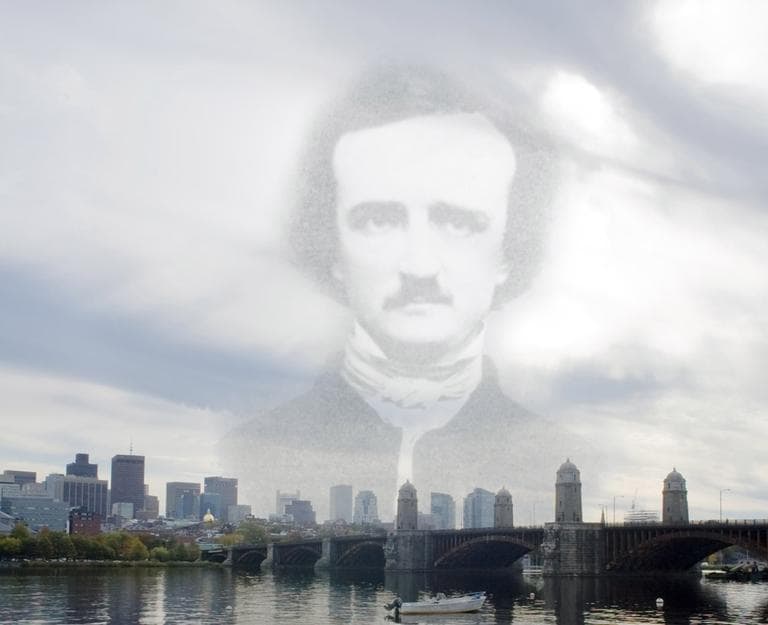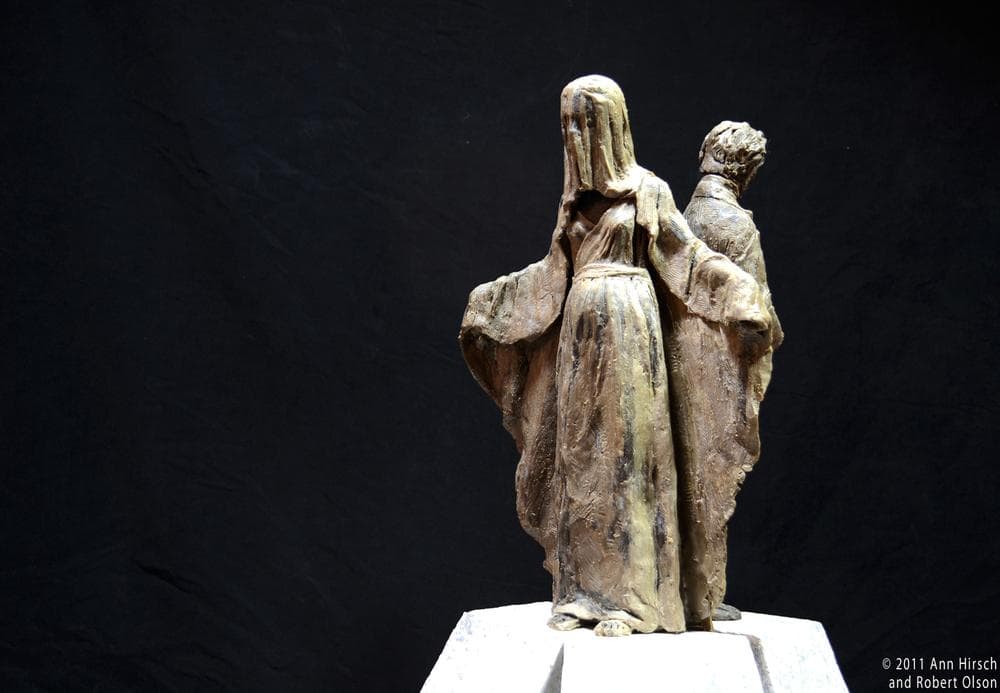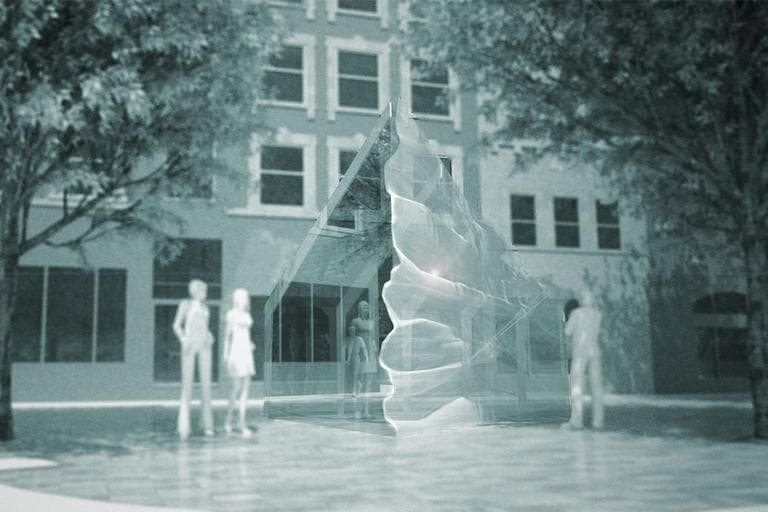Advertisement
Inch By Inch, Public Art Project For Poe Moves Forward

In the creepy short story, “The Pit and the Pendulum,” horror master Edgar Allan Poe penned: “Else there is no immortality for man.” But if all goes as planned, Poe's legacy will live on — in glass, bronze and perhaps stone — as a permanent piece of public art.
Design proposals for a a good-sized sculpture celebrating the controversial author’s life and work are being unveiled Monday night in Boston.
You might ask, why here? Well, Mr. Poe was born in Boston on Jan. 19, 1809.

“Poe has a rich, complicated, sometimes funny, sometimes very dramatic history with the city,” said Boston College professor Paul Lewis.
For years this dedicated scholar has been campaigning on Poe’s behalf, hoping to spread what he calls “Poe Fever.”
“Well, it’s not the sort of thing that happens in say, 'The Masque of the Red Death,' " Lewis said with a laugh. “It’s more like an enthusiasm for Poe, which I think is as alive here as it is anywhere else in the United States.”
Poe did get around before dying at the age of 40. He lived in cities including Richmond, Baltimore, New York and Philadelphia. But Lewis strongly believes the writer's stints in Boston were notable and formative. Poe returned after dropping out of college, Lewis reminded me, and here he published his first book of poetry in 1827, his final works, and perhaps his most famous short story, "The Tell-Tale Heart," in 1843.
“He had the whole country to choose from but he chose to come back to Boston," Lewis said, "which was the city that his mother urged him ‘ever to love,’ and said she had found her best and most sympathetic friends here."
Poe wasn't as beloved in Boston as his dear mother Eliza, though. In his day he had a reputation for being a brutally opinionated literary critic. His harsh reviews earned Poe a long list of literary foes around town (and beyond) throughout the 1830s and '40s. But in this century, Lewis is determined to give the Gothic writer his due as a talented, fearless and influential practitioner of prose.

He said Poe is a cult figure for good reason, "For his sense of humor, his association with horror, with Gothic fiction, with the invention of detective stories, with puzzles, with cryptograms..."
Lewis started advocating for a public sculpture commemorating Poe back in 2009, after curating an entertaining exhibition at the Boston Public Library that explored the writer's roots. Lewis is also the chairman of the Edgar Allan Poe Foundation of Boston.
On Monday night three finalists — chosen from a pool of 265 applicants from 42 states and 13 countries — will present their designs to city officials and abutters to Edgar Allan Poe Square adjacent to Boston Common, where the sculpture will ultimately be installed (Lewis is also responsible for convincing the city to designate that plot of park for Poe in 2009).

“The right work of art placed in that spot will create a focal point for literary tourism in Boston,” Lewis said.
For Lewis, Boston does far too little to celebrate its literary heritage — along with Poe's.
The artist teams include: Jennifer Bonner and architect Christian Stayner of Los Angeles; Ann Hirsch of Cambridge and Boston architect Robert Olson; and Stefanie Rocknak of Oneonta, N.Y. Each received a $1,000 grant from the city’s Edward Ingersoll Browne Trust Fund, which is dedicated to supporting public artwork.
The proposals are distinct, but all confront Poe's fraught relationship with his hometown.
Bonner and Stayner's "Tis the Wind" is a free-standing glass pavilion that doubles as a gift shop featuring Poe-inspired paraphernalia. Hirsch and Robert Olson designed a work featuring Poe in the company of a mysterious, shrouded figure. Rocknak's entry is a life-size likeness of the writer (he was 5"8") cast in bronze, which looks to be striding across the plaza with a large Raven in tow.
Although tonight’s presentation is private, the general public is invited to view the artists’ proposals at the Boston Public Library on Thursday, January 19 — what would’ve been Poe’s 203rd birthday.
Images will also be posted on-line at http://poeboston.blogspot.com where you can comment on the renderings.
This program aired on January 9, 2012. The audio for this program is not available.
